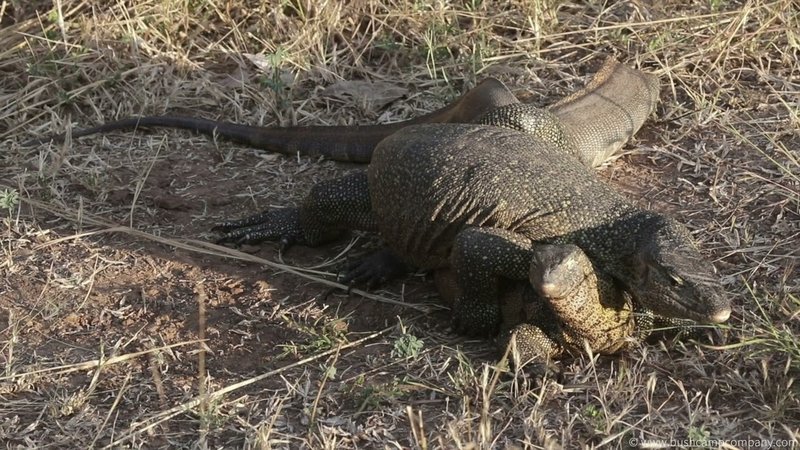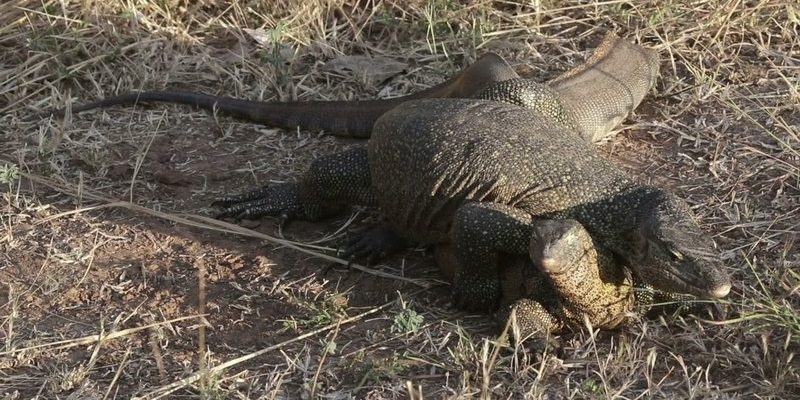
So, let’s take a closer look at what breeding and reproduction entail for these remarkable reptiles, focusing on the various species like the popular African and Asian monitor lizards. You might be wondering what makes their reproductive behavior unique, or how it varies between species. Don’t worry; we’ll go through it all step by step.
Understanding Monitor Lizard Mating Rituals
Monitor lizards have quite the intriguing approach to courtship. Most species display specific mating rituals that can vary significantly from one type to another. For instance, during the breeding season, males often engage in a display known as head bobbing. This behavior involves the male raising and lowering his head rapidly, almost like a dance invitation.
But here’s the thing: this isn’t just about showing off. The head bobbing helps establish dominance and attract potential mates. Females may respond with their own displays, which adds another layer to the interaction. While observing these rituals, you might notice that they often occur in specific habitats, such as near the water or in shaded areas where both partners feel safe.
Once the female is sufficiently impressed, mating can occur, which can last for several hours. This is essential not just for reproduction but for the pair to bond. After mating, the female prepares for one of the most critical stages of her reproductive cycle.
Nesting Habits of Monitor Lizards
After successful mating, the female monitor lizard searches for the perfect spot to lay her eggs. Monitor lizards are known to dig nests in sandy or loose soil, often in hidden locations like under rocks or in fallen logs. It’s a bit like a scavenger hunt; she wants to find a safe place that protects her future offspring from predators.
The number of eggs laid can vary widely among different species. For instance, some can lay anywhere from a handful to over 30 eggs in a single clutch! Once she’s found the right spot, she digs a hole, lays her eggs, and then covers them back up. This act is crucial, as it helps maintain the right temperature and humidity for incubation.
You might be surprised to learn that some species of monitor lizards exhibit behaviors that ensure the safety of their nests. They may stay nearby to guard them against potential threats. Isn’t that a fascinating aspect of motherhood in the animal kingdom?
Incubation Period and Hatching
After laying her eggs, the female monitor lizard leaves them to incubate. The incubation period can range from about 60 to 120 days, depending on species and environmental conditions. During this time, the eggs develop, and you might be curious about how warm temperatures play a role.
The temperature at which the eggs incubate can actually influence the sex of the hatchlings in some species. For instance, higher temperatures may lead to more males being born, while cooler temperatures favor females. This temperature-dependent sex determination is a fantastic strategy that helps maintain a balanced population based on environmental conditions.
Once the incubation period is over, it’s time for the hatchlings to emerge. They break free from their eggs, usually looking for a safe spot to start their lives. Interestingly, hatchlings are independent from the moment they emerge; they don’t rely on their mother for care, which is quite different from how many other animals operate.
Parental Care: Do Monitor Lizards Nurture Their Young?
Unlike some reptiles that provide parental care, monitor lizards largely leave their hatchlings to fend for themselves. Once they’ve hatched, the young lizards are on their own from the start. This might seem harsh, but it’s a common strategy among many reptiles, allowing the female to conserve energy for future breeding cycles.
However, the world can be tough for hatchlings. They face threats like predators, and their survival often relies on their ability to quickly blend into their environment. Many monitor lizard species have excellent camouflage, which helps them escape danger as they grow.
While parental care isn’t a strong aspect of monitor lizard behavior, it’s important to note how the survival strategies of these young lizards are shaped by their environment. From hiding to scavenging for food, each hatchling begins its journey into the wild with instincts that will help it thrive.
Behavioral Differences Among Species
Monitor lizards encompass a wide range of species, and their breeding and reproductive behaviors can differ significantly. For example, the Savannah monitor tends to be seasonally monogamous—mating with the same partner for one breeding season—while the Asian water monitor is more opportunistic, mating with multiple partners.
These behavioral differences can be attributed to environmental factors, availability of partners, and specific species adaptations. For instance, in densely populated areas, competition for mates might lead to more varied approaches to reproduction. Some species may even exhibit seasonal variations in mating behaviors based on the availability of food and shelter.
Understanding these differences is crucial for anyone interested in monitor lizard biology or conservation. By recognizing how diverse these creatures are, we can appreciate the rich tapestry of life they contribute to our ecosystems.
Challenges in Monitory Lizard Reproduction
Just like many species, monitor lizards face challenges in their reproductive success. Habitat loss, climate change, and human encroachment can significantly impact their breeding grounds. With their nesting sites being disturbed or destroyed, the future of these reptiles can be put at risk.
Moreover, the illegal pet trade has been detrimental to some monitor lizard populations, putting pressure on their numbers and disrupting their natural breeding cycles. As a result, conservation efforts are becoming increasingly important to ensure these fascinating reptiles continue to thrive in their natural habitats.
To support monitor lizards, we can advocate for habitat preservation and responsible pet ownership. Understanding their reproductive behaviors helps inform these conservation strategies, showing just how connected we are to these creatures and their ecosystems.
The more we explore the breeding and reproductive behavior of monitor lizards, the more we uncover about their lives. From unique mating rituals to the challenges they face in a changing world, these reptiles are a testament to the complexity of nature. What might seem like simple behaviors at first glance reveal an intricate web of interactions that define their existence.
As you continue to learn about monitor lizards, remember the importance of protecting their habitats and acknowledging their role in our ecosystem. Each species carries its own story, filled with adaptations and strategies that have evolved over millions of years. By understanding these elements, we not only appreciate the wonders of wildlife but also contribute to the preservation of these remarkable creatures for future generations.

